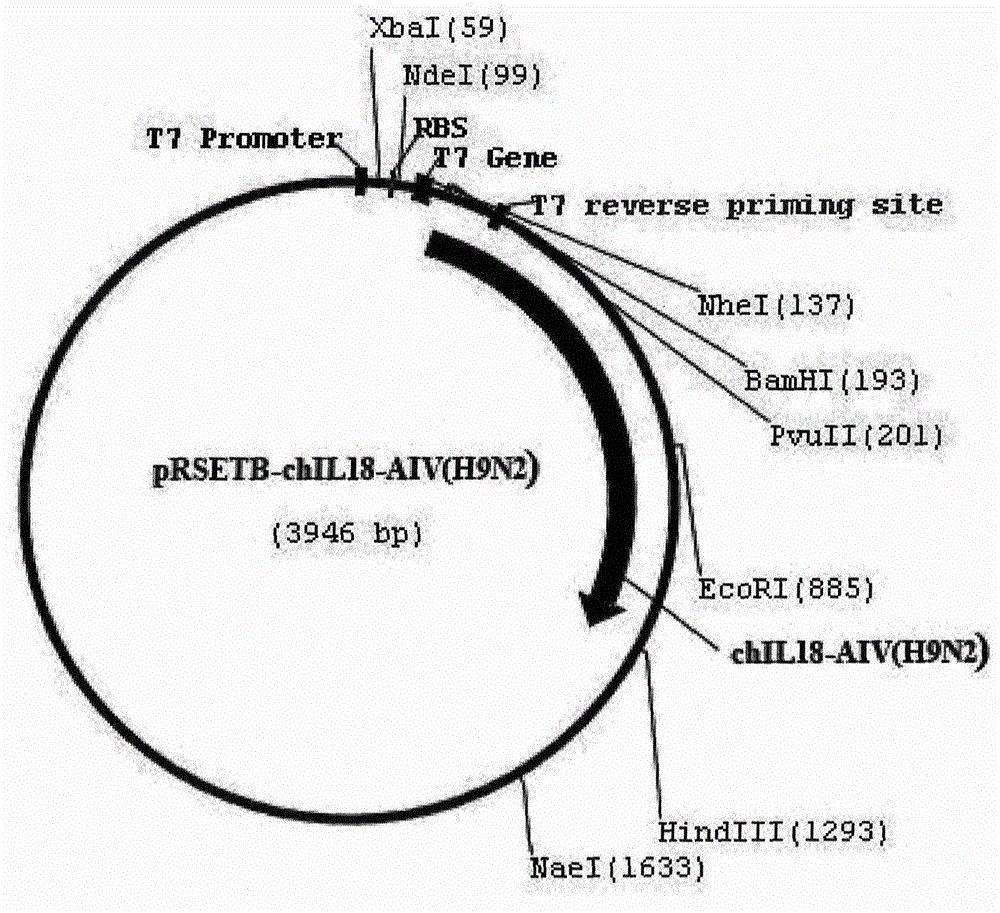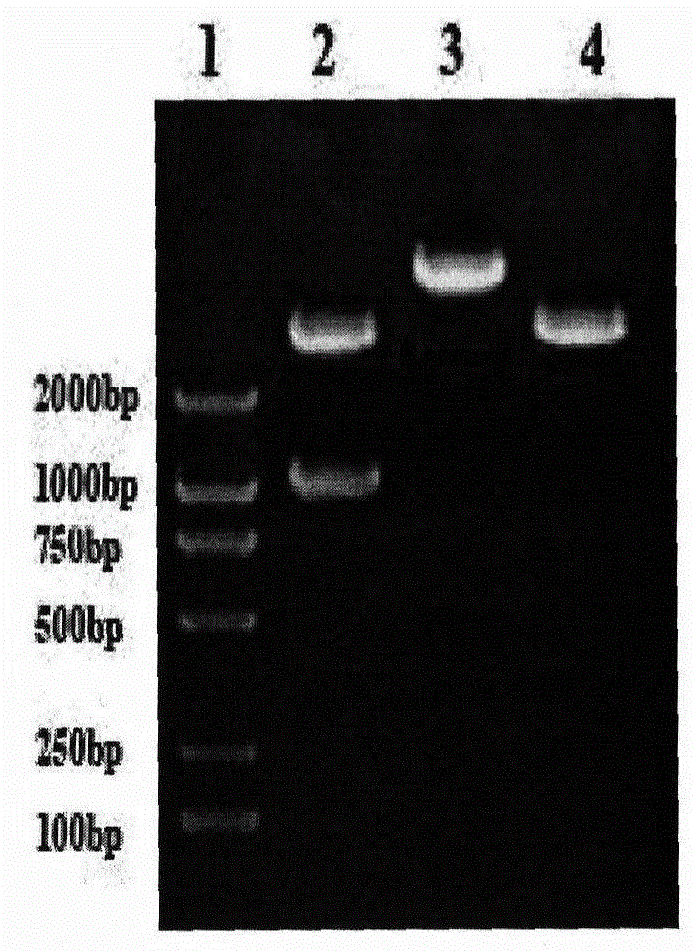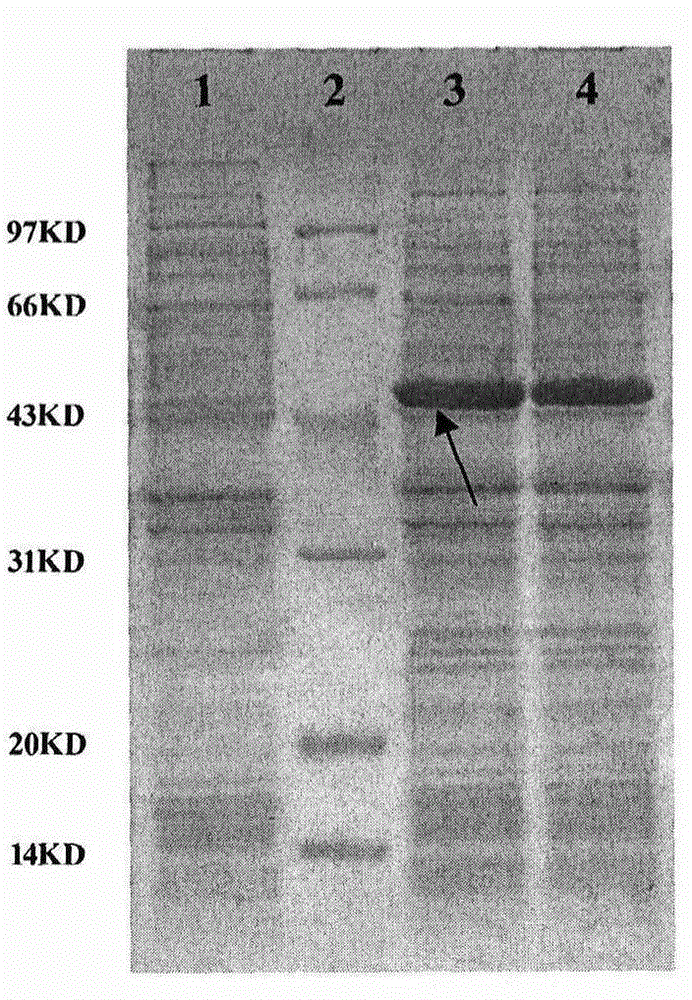Recombinant H9N2 subtype avian influenza enhanced multi-epitope vaccine
An avian influenza and multi-epitope technology, applied in the field of biotechnology genetic engineering, can solve the problems of high cost of chicken embryo multiplication, fuzzy species boundaries, interference with epidemiological monitoring, etc.
- Summary
- Abstract
- Description
- Claims
- Application Information
AI Technical Summary
Problems solved by technology
Method used
Image
Examples
Embodiment 1
[0026] Example 1 Design Idea of H9N2 Subtype Avian Influenza Multi-epitope Vaccine Protein
[0027] According to the amino acid sequences of structural proteins hemagglutinin (HA), neuraminidase (NA), nucleocapsid protein (NP) and matrix protein 2 (M2) of the main epidemic strains of domestic H9N2 subtype avian influenza, the present invention utilizes related biological Informatics software DNASTAR, BIMAS and SYFPEITHI analyzed the neutralizing epitope, Th epitope, CTL epitope and B cell epitope of the epidemic strains, and introduced avian cytokine interleukin 18 (chIL-18) as an adjuvant molecule. The designed epitope and interleukin-18 molecule polypeptide were co-expressed in Escherichia coli in series, and after fermentation, purification, emulsification and other processes, the H9N2 subtype avian influenza enhanced multi-epitope vaccine with ideal immunogenicity was obtained. The vaccine prepared by the invention can effectively prevent H9N2 subtype bird flu.
[0028]...
Embodiment 2
[0030] Embodiment two Escherichia coli expression vector and the construction of expression bacterial strain
[0031] The designed polypeptide-encoding nucleotides were sent to Shanghai Handsome Biotechnology Co., Ltd. for synthesis. BamH I (5' end) and HindIII (3' end) restriction enzyme sites were designed at both ends of the nucleotide fragment. After synthesis, they were respectively cloned into the pMD18T vector, and sequence determination confirmed that the inserted gene fragment was consistent with the designed sequence (see the sequence list). The recombinant plasmids were respectively named pMD18T-chIL18-AIV(H9N2). Digest the plasmid with the corresponding restriction endonuclease. The Escherichia coli expression vector is the pRSETB plasmid from Invitrogen Company, which is also treated with the same restriction endonuclease. Digestion conditions: 10 μl reaction system, add 2 μl plasmid into the system , 5 activity units of restriction endonuclease (New England Biol...
Embodiment 3
[0035] Fermentation, purification and emulsification of embodiment three engineering bacteria
[0036] The production strains were taken for fermentation, inoculated in 2 mL of LB liquid medium (containing 100 μg / mL ampicillin), and cultured at 37° C. with shaking at 200 rpm for 12 hours to activate the strains. Then inoculate the shake flask with an inoculation amount of 1:100, shake and culture at 37°C until OD600=3, and then inoculate it into a fermenter at a ratio of 10%. The fermentation medium is a semi-synthetic medium prepared with distilled water. Calibrate the dissolved oxygen and pH electrodes, start the tank to stir, the rotation speed is 300rpm, and sterilize the tank on-line. When the temperature of the culture solution in the tank drops to 37.0°C, calibrate the pH and dissolved oxygen (OD) zero point. The fermentation temperature was 37.0±0.1°C, the dissolved oxygen was controlled at about 40%, and the pH was controlled at 7.0. After inoculation, when the OD600...
PUM
 Login to View More
Login to View More Abstract
Description
Claims
Application Information
 Login to View More
Login to View More - R&D Engineer
- R&D Manager
- IP Professional
- Industry Leading Data Capabilities
- Powerful AI technology
- Patent DNA Extraction
Browse by: Latest US Patents, China's latest patents, Technical Efficacy Thesaurus, Application Domain, Technology Topic, Popular Technical Reports.
© 2024 PatSnap. All rights reserved.Legal|Privacy policy|Modern Slavery Act Transparency Statement|Sitemap|About US| Contact US: help@patsnap.com










